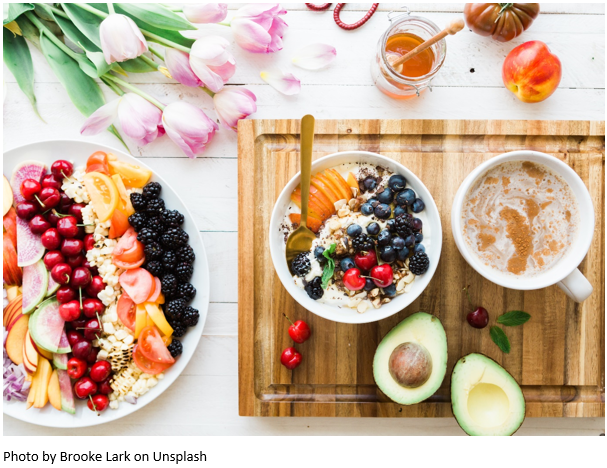Amy Bond, Assistant Librarian and Information Specialist, Bord Bia – The Irish Food Board
As outlined in Bord Bia’s consumer lifestyle trends, health and wellbeing will continue to be a key trend shaping consumer’s lives and the food and drink industry. Consumers want to eat, drink and live to optimise their body’s systems, to feel better than well today and tomorrow (“Bord Bia Consumer Lifestyle Trends”, 2019). However, how consumers believe this is achieved will continue to evolve, so it is important that food producers are not complacent in their understanding of this trend.
New Nutrition Business have released a report looking at the key trends they believe will shape the health and wellness space in 2020 (New Nutrition Business, 2019). Some of the trends are similar to years past, some have advanced from their previous incarnation, and some are new.
- Digestive Wellness: The quest for digestive wellness is almost universal. A third of people suffer from some kind of digestive complaint. But there are a number of different approaches that consumers are taking to try and regulate their digestion. These include gluten-free foods, probiotics and fermentation, fibre, lactose-free/dairy-free products, A2 milk and the Fodmap diet.
- Good Carbs, Bad Carbs: Consumers have been wary of carbohydrates for some time, and this looks set to continue, but there are ways to mitigate this if carbs are your business. Consumers can be tempted to indulge still with healthier alternatives like low sugar or added benefits, and smaller portion sizes. People do understand that carbs are an essential energy source, so that can be key to communications. But it is clear that consumers will still continue to treat themselves as well, so not all products need a health message.
- Plant-Based: Plant-based will continue to be a key innovation platform. Plant-based ingredients will be used in meat and dairy alternatives, and as a carbohydrate replacement. But not everyone will adopt a fully plant-based diet, so they will also be used in conjunction with meat and carbohydrates to add to the health credentials of more traditional products.
- Sugar: Sugar will continue to a demonised ingredient, so reformulation is will be key for companies looking to reduce, replace and eliminate. Natural sugars are more appealing to consumers. If sugar is inherent to your offering smaller portion sizes can give permission to indulge to consumers that might avoid it otherwise.
- Protein: Plant protein and meat alternatives will continue to grow, but consumers are becoming more wary of the unnaturalness of some alternative products. Dairy and meat will continue to be key sources of protein for consumers, but they will be increasingly focused on the quality of these sources.
- Fat Reborn: This is one ingredient that is seeing a recovery in its reputation. People no longer associate fat as an ingredient with weight gain, and high-fat diets like the Keto diet are becoming more popular. But consumers are more educated about the differences between different types of fat, and what are ‘good’ and ‘bad’ fats, so be aware of this in communications.
- Meat Reimagined: People still love meat and are open to hearing more positive stories about it. Communication is key to this shift, but they are also interested in new and innovative formats, particularly in snacking and convenience. People also want to be reassured that the meat they are purchasing meets the best possible standards in terms of welfare and sustainability.
- Provenance and Authenticity: Local produce ties in clearly with consumers’ desire to live a more sustainable lifestyle, but they also are still open to buying products from around the world, however, they still want to have a clear and authentic provenance story to tell.
- Energy 2.0: The pace of consumers’ lives shows no signs of slowing, so they will continue to turn to food and drink to help maintain their energy levels. Caffeine is still seen as a top choice for an energy boost, and consumers are open to more formats than coffee and energy drinks. Consumers also look to sugar but want healthier and more natural options. New ingredients can also create a niche, with alkaline water seeing huge growth in the US.
- Mood: People are increasingly aware of the positive and negative impacts certain food and drinks can have on their mood. Fruit and vegetables, “gut-friendly” foods, fibre, ‘good carbs’ and healthy fats are believed to have benefits to mental wellbeing. On the other hand, people looking to stabilize their mood are avoiding alcohol, sugar and processed foods.
The Health and Wellness space will continue to hold lucrative opportunities for Irish food and drink producers, but those who will have the most success are those with a deep understanding of the trends driving the markets and are reactive to the shifts in these trends.
For more information contact amy.bond@bordbia.ie
References
Bord Bia Consumer Lifestyle Trends. (2019). Retrieved 14 September 2019, from https://www.bordbiaconsumerlifestyletrends.ie/
New Nutrition Business. (2019). 10 Key Trends in Food, Nutrition & Health 2020. New Nutrition Business.




